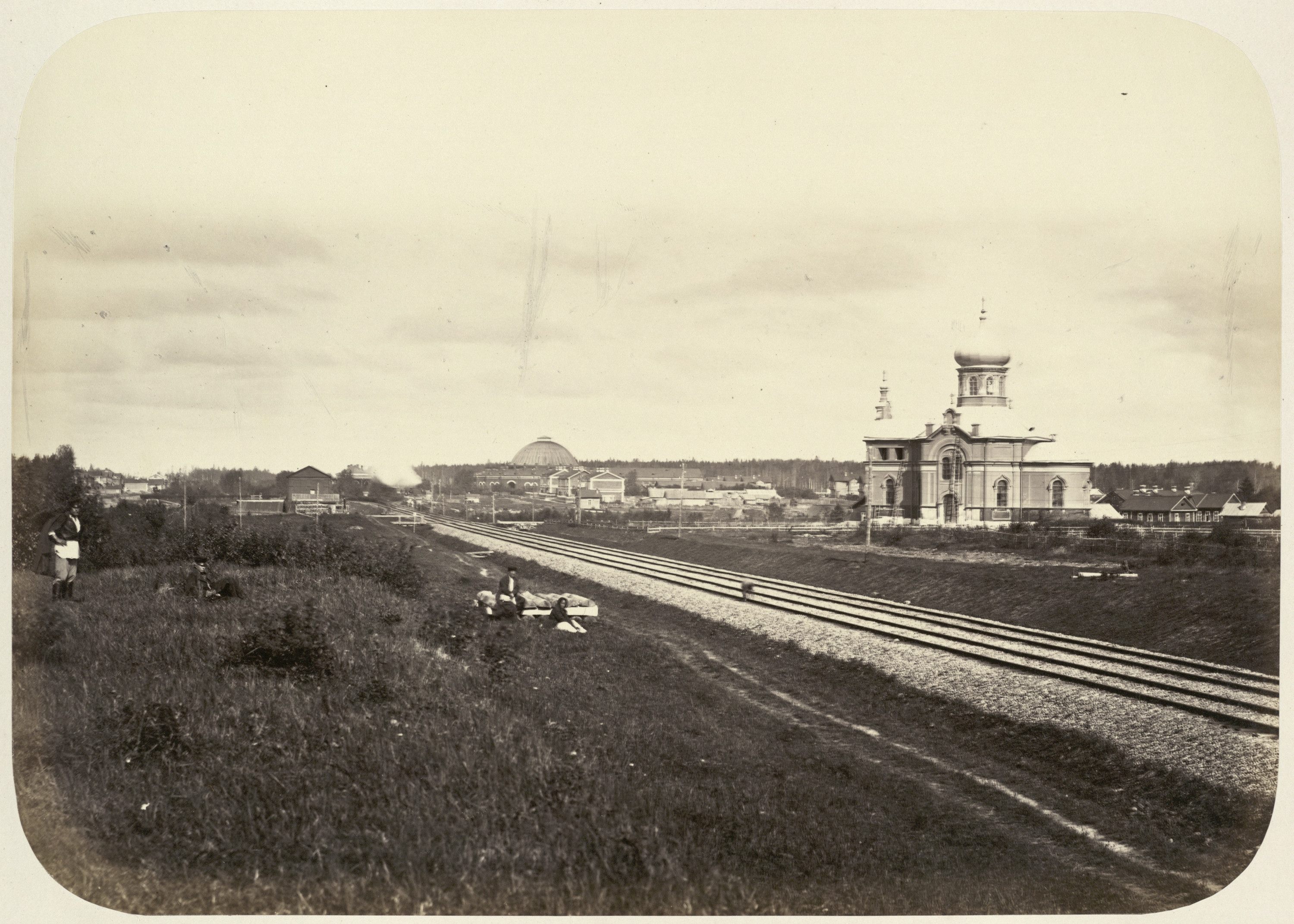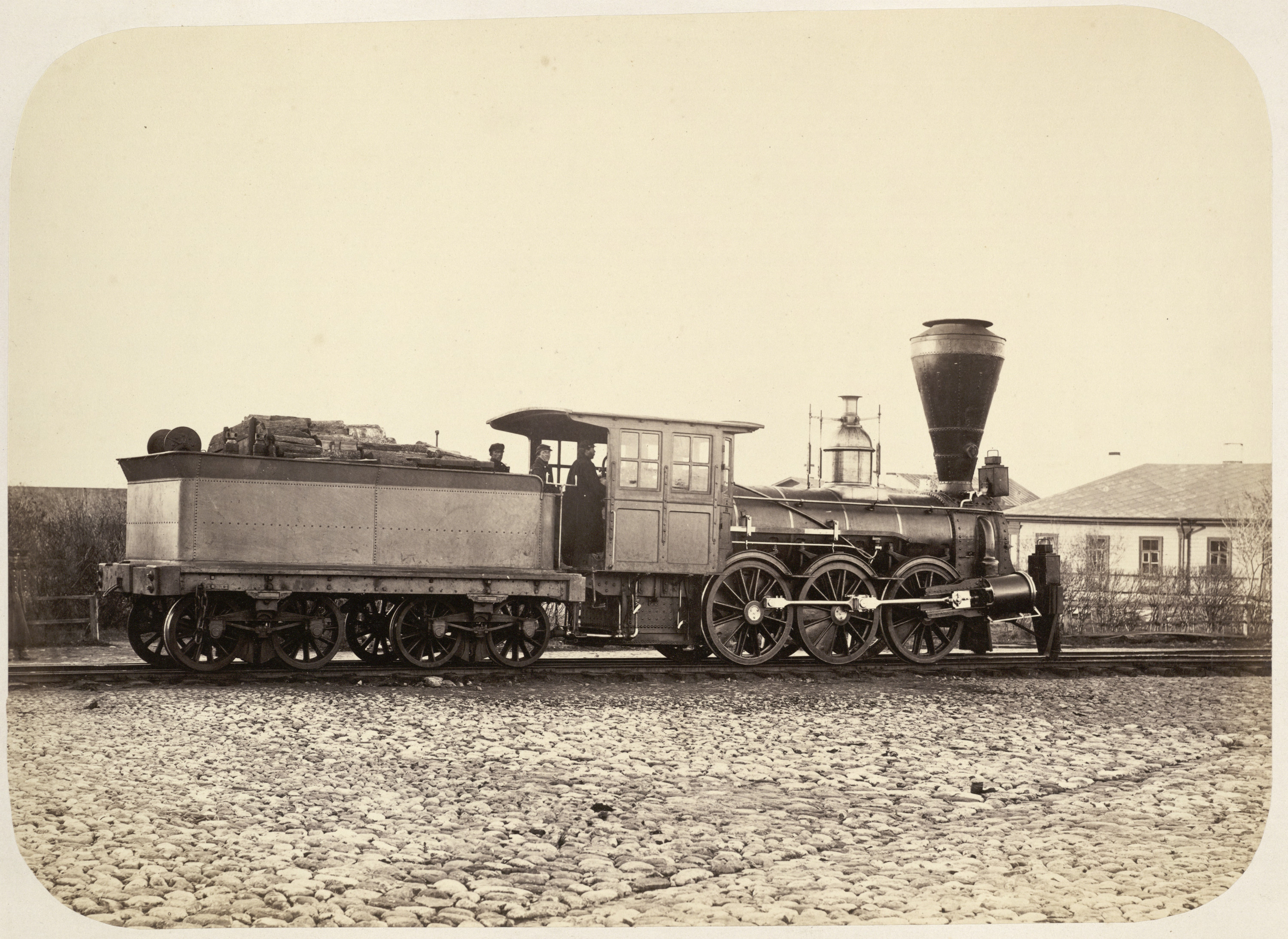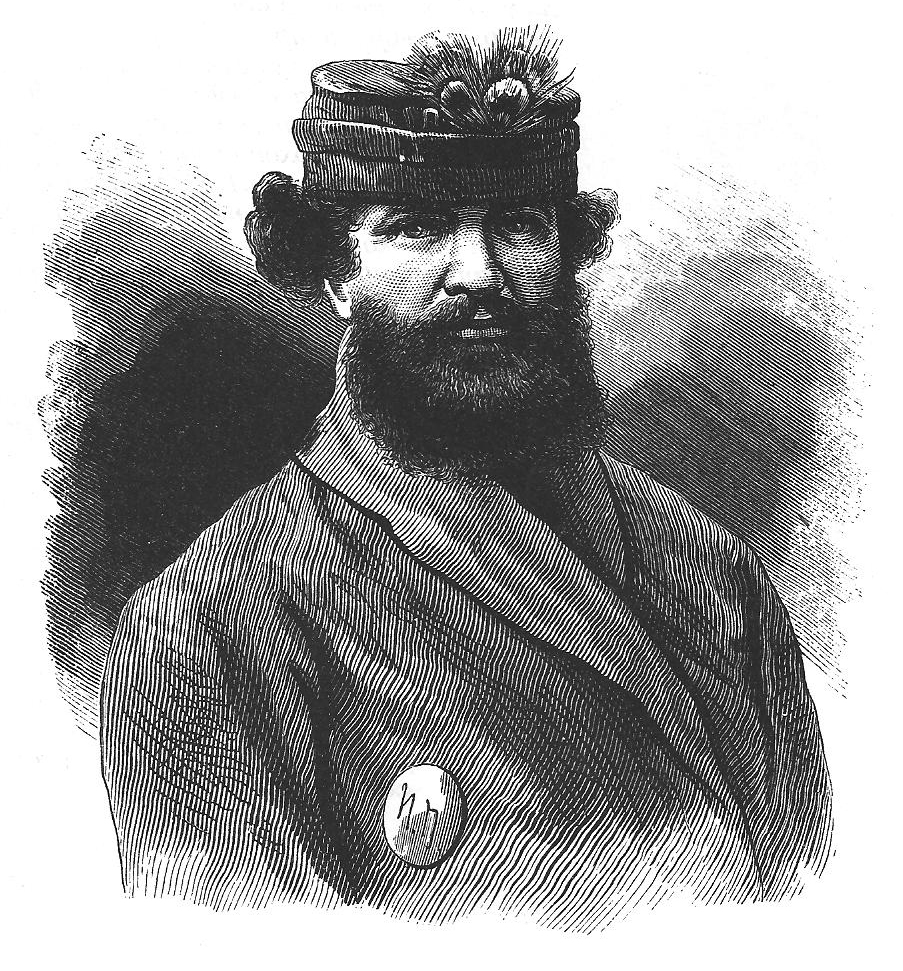|
Kresttsy, Krestetsky District, Novgorod Oblast
Kresttsy (russian: Кре́стцы) is an urban locality (a work settlement) and the administrative center of Krestetsky District of Novgorod Oblast, Russia, situated on the M10 highway connecting Moscow and St. Petersburg, east of Veliky Novgorod. Kresttsy is also located on the Kholova River. Municipally, it is incorporated as Krestetskoye Urban Settlement, the only urban settlement in the district. Population: History Kresttsy (Krestetsky Pogost) was first mentioned in 1393. At the time, it was a part of Derevskaya Pyatina of the Novgorod Republic. In the end of the 15th century, together with Novgorod, it became a part of the Grand Duchy of Moscow. In the course of the administrative reform carried out in 1708 by Peter the Great, the area was included into Ingermanland Governorate (known since 1710 as Saint Petersburg Governorate). In 1727, separate Novgorod Governorate was split off. In the 18th century, Kresttsy was an important trading settlement, which lied ... [...More Info...] [...Related Items...] OR: [Wikipedia] [Google] [Baidu] |
Novgorod Oblast
Novgorod Oblast (russian: Новгоро́дская о́бласть, ''Novgorodskaya oblast'') is a federal subject of Russia (an oblast). Its administrative center is the city of Veliky Novgorod. Some of the oldest Russian cities, including Veliky Novgorod and Staraya Russa, are located in the oblast. The historic monuments of Veliky Novgorod and surroundings have been declared a UNESCO World Heritage Site. Population: 634,111 ( 2010 Census). Geography Novgorod Oblast borders with Leningrad Oblast in the north and in the northwest, Vologda Oblast in the east, Tver Oblast in the southeast and in the south, and Pskov Oblast in the southwest. The western part is a lowland around Lake Ilmen, while the eastern part is a highland (northern spurs of the Valdai Hills). The highest point is Mount Ryzhokha in the Valdai Hills (). In the center of the oblast is Lake Ilmen, one of the largest lakes in Central Russia. The major tributaries of Lake Ilmen are the Msta, which originat ... [...More Info...] [...Related Items...] OR: [Wikipedia] [Google] [Baidu] |
Peter The Great
Peter I ( – ), most commonly known as Peter the Great,) or Pyotr Alekséyevich ( rus, Пётр Алексе́евич, p=ˈpʲɵtr ɐlʲɪˈksʲejɪvʲɪtɕ, , group=pron was a Russian monarch who ruled the Tsardom of Russia from to 1721 and subsequently the Russian Empire until his death in 1725, jointly ruling with his elder half-brother, Ivan V until 1696. He is primarily credited with the modernisation of the country, transforming it into a European power. Through a number of successful wars, he captured ports at Azov and the Baltic Sea, laying the groundwork for the Imperial Russian Navy, ending uncontested Swedish supremacy in the Baltic and beginning the Tsardom's expansion into a much larger empire that became a major European power. He led a cultural revolution that replaced some of the traditionalist and medieval social and political systems with ones that were modern, scientific, Westernised and based on the Enlightenment. Peter's reforms had a lasting ... [...More Info...] [...Related Items...] OR: [Wikipedia] [Google] [Baidu] |
Valday, Novgorod Oblast
Valday (russian: Валда́й) is a town and the administrative center of Valdaysky District in Novgorod Oblast, Russia, located on the southwestern shore of Lake Valdayskoye, the biggest one in the set of lakes in the highest region of the Valdai Hills, on the M10 Highway connecting Moscow and St. Petersburg, from Moscow and from Veliky Novgorod, the administrative center of the oblast. Population: History It was first mentioned in a chronicle in 1495. At the time, it was a part of Derevskaya Pyatina of the Novgorod Republic. The growth of Valday was facilitated by construction of a road connecting Novgorod to Central Russia and by the foundation of the Valday Iversky Monastery in 1653, which became a major cultural center. The famous monastery, built under the auspices of Patriarch Nikon in the 1650s, is located on one of the islands of Lake Valdayskoye. In the course of the administrative reform carried out in 1708 by Peter the Great, the territory was inclu ... [...More Info...] [...Related Items...] OR: [Wikipedia] [Google] [Baidu] |
Malaya Vishera
Malaya Vishera (russian: Ма́лая Ви́шера) is a town and the administrative center of Malovishersky District in Novgorod Oblast, Russia. Population: History The name of the town originates from the Malaya Vishera River, a tributary of the Vishera River. It was founded in 1843, as the construction of the Moscow–St. Petersburg Railway (opened in 1851) passing through the modern town started. At the time, it was a part of Krestetsky Uyezd of Novgorod Governorate. On February 24, 1918, Malovishersky Uyezd was established and Malaya Vishera became its seat.Snytko et al., p. 35 In 1921, Malaya Vishera was granted town status. In August 1927, the uyezds were abolished and, effective October 1, 1927, Malovishersky District was established, with the administrative center in Malaya Vishera.Snytko et al., p. 85 Novgorod Governorate was abolished as well and the district became a part of Novgorod Okrug of Leningrad Oblast. On July 23, 1930, the ... [...More Info...] [...Related Items...] OR: [Wikipedia] [Google] [Baidu] |
M10 Highway (Russia)
The M10 "Russia" (russian: "Россия") is a federal highway in Russia connecting the country's two largest cities, Moscow and Saint Petersburg. Other than in the vicinity of Moscow and Saint Petersburg, the M10 is basically a two-lane highway (one lane for each direction), with an occasional third centre lane to allow overtaking or for left-turning traffic at intersections. History The highway Moscow - Tver - Novgorod existed even before the founding of Saint Petersburg. Along the way there were special checkpoints ( Yam) in particular Yedrovo, Valday, Yazhelbitsy, Krestsy, and Bronnitsa. The first road, long, in this area was built by order of Peter the Great from 1712 to 1746. The construction of this road was run by an office that formed for this purpose. After the completion of the road in 1755, it was transformed into the Office of the structure of public roads. It was later known as the Commission on the Roads in the State. Route Moscow to Saint Petersburg The dist ... [...More Info...] [...Related Items...] OR: [Wikipedia] [Google] [Baidu] |
Leningrad Oblast
Leningrad Oblast ( rus, Ленинградская область, Leningradskaya oblast’, lʲɪnʲɪnˈgratskəjə ˈobləsʲtʲ, , ) is a federal subjects of Russia, federal subject of Russia (an oblast). It was established on 1 August 1927, although it was not until 1946 that the oblast's borders had been mostly settled in their present position. The oblast was named after the city of Saint Petersburg, Leningrad. In 1991, the city restored its original name, Saint Petersburg, but the oblast retains the name of Leningrad. The capital and largest city is Gatchina. The oblast overlaps the historic region of Ingria and is bordered by Finland (Kymenlaakso and South Karelia) in the northwest and Estonia (Ida-Viru County) in the west, as well as five federal subjects of Russia: the Republic of Karelia in the northeast, Vologda Oblast in the east, Novgorod Oblast in the south, Pskov Oblast in the southwest, and the federal city of Saint Petersburg in the west. The first governor of L ... [...More Info...] [...Related Items...] OR: [Wikipedia] [Google] [Baidu] |
Novgorod Okrug
Veliky Novgorod ( rus, links=no, Великий Новгород, t=Great Newtown, p=vʲɪˈlʲikʲɪj ˈnovɡərət), also known as just Novgorod (), is the largest city and administrative centre of Novgorod Oblast, Russia. It is one of the oldest cities in Russia, being first mentioned in the 9th century. The city lies along the Volkhov River just downstream from its outflow from Lake Ilmen and is situated on the M10 federal highway connecting Moscow and Saint Petersburg. UNESCO recognized Novgorod as a World Heritage Site in 1992. The city has a population of At its peak during the 14th century, the city was the capital of the Novgorod Republic and was one of Europe's largest cities. The "Veliky" ("great") part was added to the city's name in 1999. History Early developments The Sofia First Chronicle makes initial mention of it in 859, while the Novgorod First Chronicle first mentions it in 862, when it was purportedly already a major Baltics-to-Byzantium station on the ... [...More Info...] [...Related Items...] OR: [Wikipedia] [Google] [Baidu] |
Village
A village is a clustered human settlement or community, larger than a hamlet but smaller than a town (although the word is often used to describe both hamlets and smaller towns), with a population typically ranging from a few hundred to a few thousand. Though villages are often located in rural areas, the term urban village is also applied to certain urban neighborhoods. Villages are normally permanent, with fixed dwellings; however, transient villages can occur. Further, the dwellings of a village are fairly close to one another, not scattered broadly over the landscape, as a dispersed settlement. In the past, villages were a usual form of community for societies that practice subsistence agriculture, and also for some non-agricultural societies. In Great Britain, a hamlet earned the right to be called a village when it built a church. [...More Info...] [...Related Items...] OR: [Wikipedia] [Google] [Baidu] |
Saint Petersburg–Moscow Railway
The Saint Petersburg to Moscow railway (1855–1923 – ''Nikolaevskaya railway'') runs for through four oblasts: Leningrad, Novgorod, Tver and Moscow. It is a major traffic artery in the north-west region of Russia, operated by the October Railway subdivision of Russian Railways. History Context On 1 February 1842, Tsar Nicholas I issued a ukase ordering the railway's construction. The railway was a pet project of Pavel Melnikov (1804–1880), an engineer and administrator who supervised its construction and whose statue may be seen near the southern terminus, the Leningradsky railway station in Moscow. The idea of a railway connecting the two capitals gave rise to a prolonged controversy, with some reactionary officials predicting social upheaval if the masses were allowed to travel. It was decided that only the affluent would be allowed to use the line; every passenger was to be subjected to strict passport and police control. Although the Tsarskoye Selo Railway, ... [...More Info...] [...Related Items...] OR: [Wikipedia] [Google] [Baidu] |
Novgorod Viceroyalty
Novgorod Viceroyalty (russian: Новгоро́дское наме́стничество) was an administrative division (a '' namestnichestvo'') of the Russian Empire, which existed in 1776–1796. The seat of the Viceroyalty was located in Novgorod. The viceroyalty was established by a decree (''ukase'') of Catherine II on , 1776. It was subdivided into two oblasts: Novgorod and Olonets Oblast. The predecessor of Novgorod Viceroyalty was Novgorod Governorate with the seat in Novgorod. Tver Province which belonged to Novgorod Governorate, was transformed into Tver Viceroyalty, and the rest of the governorate became Novgorod Viceroyalty. Novgorod Oblast included ten '' uyezds'', and, in particular, Kresttsy and Kirillov were chartered to become uyezd towns. Olonets Oblast included five uyezds, and Petrozavodsk was chartered in 1777. As with most of other governorates and viceroyalties established in the 1770s–1780s, the establishment of Vologda Viceroyalty was a part of the ... [...More Info...] [...Related Items...] OR: [Wikipedia] [Google] [Baidu] |
Krestetsky Uyezd
Krestetsky Uyezd (''Крестецкий уезд'') was one of the subdivisions of the Novgorod Governorate of the Russian Empire. It was situated in the southwestern part of the governorate. Its administrative centre was Kresttsy. Demographics At the time of the Russian Empire Census of 1897, Krestetsky Uyezd had a population of 104,389. Of these, 95.9% spoke Russian, 1.3% Latvian, 0.9% Estonian, 0.6% German, 0.4% Karelian, 0.3% Yiddish, 0.1% Polish, 0.1% Tatar, 0.1% Belarusian and 0.1% Finnish Finnish may refer to: * Something or someone from, or related to Finland * Culture of Finland * Finnish people or Finns, the primary ethnic group in Finland * Finnish language, the national language of the Finnish people * Finnish cuisine See also ... as their native language. Демоскоп Weekly - Приложение. Справочник стати� ... [...More Info...] [...Related Items...] OR: [Wikipedia] [Google] [Baidu] |
Ortoo
Yam ( mn, Өртөө, ''Örtöö'', ''checkpoint'') was a postal system or supply point route messenger system extensively used and expanded by Ögedei Khan and also used by subsequent Great Khans and Khans. Relay stations provided food, shelter and spare horses for Mongol army messengers. Ögedei Khan gave special attention to Yam because Mongol armies travelled quickly; their messengers had to be even faster, and they covered per day. The system was used to speed up the process of information and intelligence. The system was preserved in Tsarist Russia after the disintegration of the Golden Horde. Etymology The name Yam was adopted into most Western languages from Russian, in which it probably is from Mongolian ''yam'' ('ministry' or 'office'). However, in the Mongolian Empire, both the postal system and the individual stations were named ''Örtöö'' (''Örtege in'' Classical Mongolian). Description The Yam operated with a chain of relay stations at certain distan ... [...More Info...] [...Related Items...] OR: [Wikipedia] [Google] [Baidu] |








